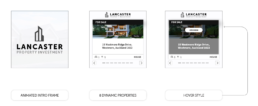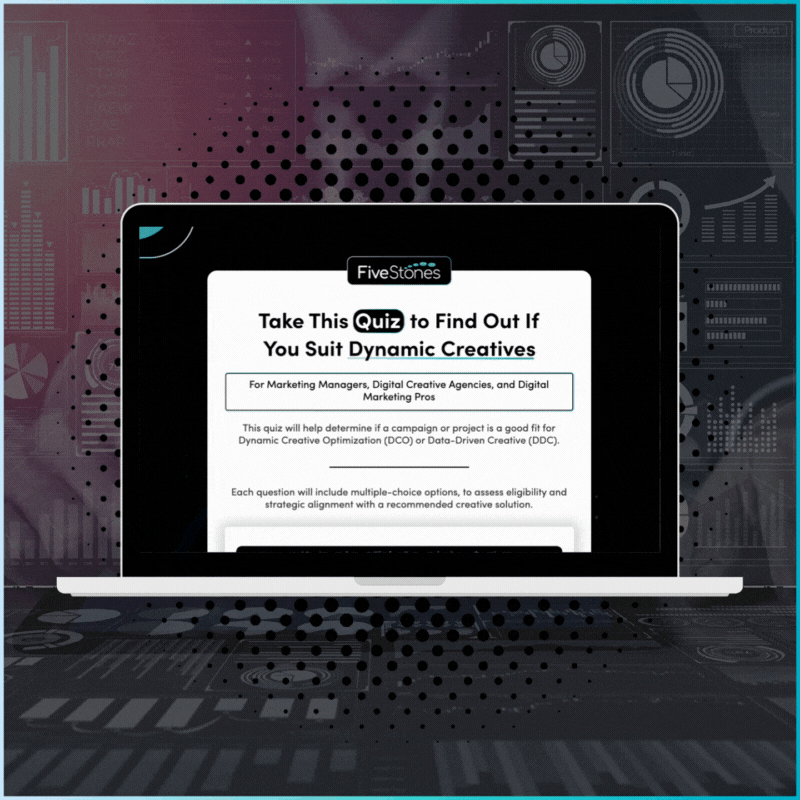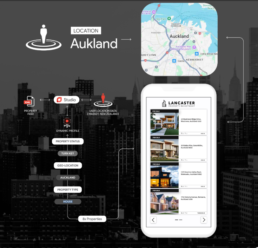Property marketers are encountering significant operational challenges in creative.
When promoting property listings across various digital platforms, marketers ofter rely on limited creative variations. By contrast, solutions like dynamic creative optimisations (DCO) helps advertisers deliver more relevant, informative and impactful experiences to prospective buyers, ensuring each ad speaks directly to user preferences and property interests.
Creating individual campaigns for every new property listing is not only time-consuming it’s operationally unscalable. Manually producing ads involves repeated rounds of design, formatting, approval, QA, and trafficking. Each listing change could require updated display sizes, refreshed copy, creative development, and client sign-off. At scale, this process is both costly and slow especially when listings can change by the hour. Multiply that across hundreds of listings, and traditional workflows simply break.
“Each time a new property is listed, updating campaigns manually multiplies the workload and the cost. From design and display layout to ad specs, quality assurance, client sign-off, and platform development, each step carries time, cost, and risk. Departments juggle different tools, file formats, design approvals, and QA checks. With hundreds of listings rotating weekly, this process becomes nearly impossible to scale let alone keep fresh and accurate.” Bradley Lancaster, Creative Solutions Lead
The reality is this: as the real estate landscape shifts, the creative workload can get more fragmented, more complex, and harder to scale.
The solution lies in leveraging Data-Driven, Dynamic Creative Optimisation (DCO) to address these scalability challenges.
In this blog post, we examine the most common media creative challenges in property marketing today—and where DCO might help you scale smarter.
The creative bottleneck and shared pain points across the industry
B2C and B2B marketers in commercial real estate (CRE) consistently encounter these barriers in creative development.
Too Many Variables
You’re tailoring creative to multiple locations, property types, funnel stages, and buyer personas. A logistics manager looking for industrial space in Brisbane doesn’t want the same message as a corporate decision-maker looking for office space in Sydney.
Data That Doesn’t Connect to Creative
You might have live pricing data, detailed listings, or rich customer segmentation. But integrating that information into your creative assets often becomes a manual, error-prone process.
Creative Fatigue
Even with several versions of your ads, campaigns can feel stale. Especially when you’re targeting high-consideration B2B audiences, or re-engaging returning users in a long decision journey.
DCO, when implemented strategically, addresses these specific operational gaps.
What is DCO?
Dynamic Creative Optimization uses structured data, logic rules, and modular templates to generate ad variations automatically. It’s a powerful way to scale creative while maintaining relevance.
From our recent blog post on Turning Real Estate Trends into Media Tactics, we know that platforms like DV360 allow you to build creatives that respond to location, time of day, and inventory changes. However, dynamic creative optimisation isn’t suitable for every campaign scenario.
Here’s how to evaluate your project’s DCO fit:
- You run campaigns in multiple markets or regions.
- You have structured product or property feeds (e.g., availability, price).
- You need to personalize messaging by audience segment or buyer type.
- Performance metrics like ROI, CPA, or conversion volume are your primary KPIs.
Not sure where you stand?
Take our 2-minute quiz to get a recommendation on if you suit Dynamic Creatives.
Real-Life Scenarios: Where Data-Driven, Dynamic Creative Optimisation Adds Value, and Where It Doesn't
A) CRE Platform Operating in Australia & Singapore
Challenge: Promoting industrial spaces, retail hubs, and premium offices to different investor segments.
Solution: DCO allowed team to update ads dynamically based on geo location, property status, property type, or promotion type —all without rebuilding creatives for every variation.

B) Single-Property Prestige Launch
Challenge: Launching an ultra-luxury residence with storytelling-driven creative.
Why Static Worked Better: A bespoke hero video and carefully crafted landing page told a consistent brand story. DCO wasn’t necessary and would have been a wasted investment,
Tools to help you decide
To help property marketers and agencies assess their readiness for dynamic creative, we’ve built a set of resources:
- Take the Quiz: Is your campaign structure and creative process a good fit for DCO? Find out in under 2 minutes here.
- Browse the Format Gallery (Coming Soon): Filter creative formats by funnel stage and property campaign type—great for inspiration and quick starts.
Frequently Asked Questions (FAQ)
What is Dynamic Creative Optimization (DCO)?
DCO is a technology that uses data and modular templates to automatically generate personalized ad creatives for different audiences, locations, or inventory changes, helping marketers scale relevance efficiently.
When should property marketers consider using DCO?
DCO is ideal for campaigns with multiple properties, regions, or audience segments where manual creative production is unscalable. It’s especially useful when you have structured data feeds and prioritize performance metrics.
Can DCO be used for every property campaign?
No, DCO is most effective when personalization and automation are needed at scale. For highly bespoke, storytelling-driven launches, static creative may still deliver better brand impact.
How does DCO integrate with existing marketing platforms?
Many ad platforms, such as Google’s Display and Video 360, support DCO by allowing imports of data feeds and logic rules to automate creative generation and optimisation.
Conclusion: Scale Smarter, Not Just Bigger
In our 2025 Real Estate Trends blog posts (check it out below!), we discussed how marketers must adapt to investor expectations, sustainability values, and regional nuances. Managing these diverse requirements requires strategic creative solutions that support, rather than hinder, campaign performance..
Dynamic creative isn’t the only answer. But it is one of the most effective tools for scaling relevance without scaling chaos.


